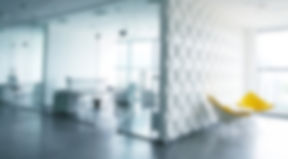How to Shoot Product Photos for Your Website

As part of my job, I take product pictures for our startup company ArboVe Foods, LLC. To do this I set up the scene in my living room where my product will be in direct sunlight. I have a foldable couch that I move to facing the largest window in the room as it normally is placed against the window. I then also add in a box light or two because my apartment is rather dark but also in case I’m shooting on a rainy day. Once my couch is moved and in position, I will lay a few pillows down so that my product can have a squishy surface to stand up on its own. For a product that doesn’t stand on its own and you want to prop up without editing out hands, I have found this works great for me. The pillows are able to form and move to keep your product in the position you want. I then drape a clean white bed sheet over the set up and stand up my product. (If this description is difficult to understand, there’s a video corresponding to this blog on our Facebook page - https://www.facebook.com/watch/?v=329066291424928).
For you trying to recreate there are three main elements to this: a structure piece, a background, and pillows. First, for your structure piece you can use a couch, a chair, a table, or anything else sturdy to hold up your product. The only requirement is this stable piece needs to be in direct light. If you don’t have box light, make sure all the lights in the room are turned on and you have a tripod to reduce movement and blur. Second, you don’t have to use a white sheet but any piece of cloth, a blanket, a cut yard of fabric, etc. that will cover enough space to be a background. You could possibly even set up a cardboard box missing one wall with wallpaper or contact paper on it. You just need a pretty background that won’t show where you’re actually taking the photo. And lastly, you may not even need pillows or this squishy stabilization element. However, if you do need that element and don’t have pillows folded blanked, clothes or anything else you can form will also work. If you’re good with editing, you can always use a hand here and photoshop it out. But those are the three necessary things to recreate my strategy.
Moving along to the camera and action of photo taking. I use a DSLR to take all of our product pictures, however you can use an iPhone on portrait mode or another device. If you are shooting with a DSLR and don’t shoot in manual, switch on over to the close up (flower) setting. If you do shoot manual, I need my f-stop in the f/1.4 to f/5.6 range as to keep that sharp focus on my product and my shutter speed slow to accommodate that. This is why you may need a tripod to decrease the possibility of movement and blur showing in your pictures. Once I have found my settings, with flash I will take from three angles: left side, front, right side. Without flash, I will take photos from the left and right side as to not create a shadow straight on with my body by blocking my light source. This is to give myself that variety when choosing the perfect image later.
After my photos are taken, you can simply edit on your device if shooting from a phone, post as is, or import to Lightroom/Photoshop if shooting with a DSLR. I always import to Lightroom and do some basic editing. With Lightroom I will take out any wrinkles in the sheet, any dust, or any imperfections in the photo. Then I will edit exposures, highlights on flash photos, saturation, texture, clarity, and dehaze. Below are examples of final results.





I hope this blog gave you a little bit of insight for how you at home can shoot plain product pictures easily with no professional props or equipment. If this blog interests you and you want to learn more about what I do in my job and how I can help you, stay tuned! Keep following us and our pages, and we will have new blogs every week and new videos every Wednesday showcasing different things in the marketing world and a marketing job. Have a great day!











